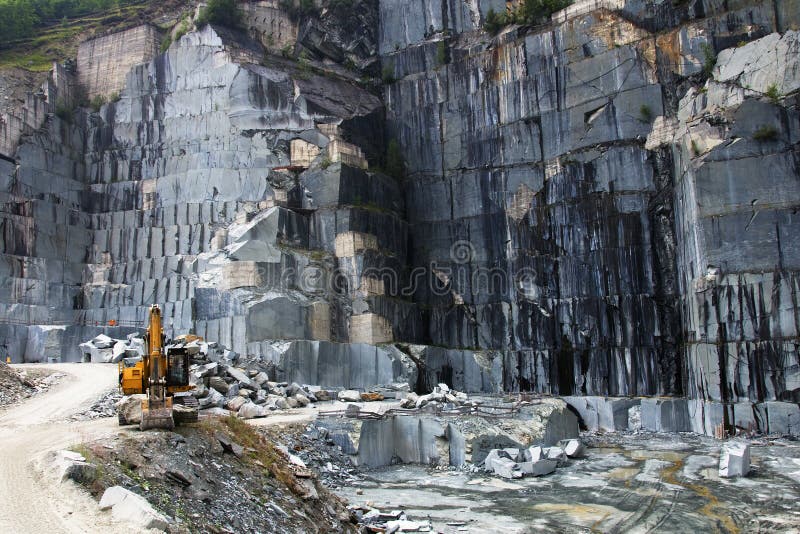Revealing the Mysteries of Granite Quarrying: Where Stamina and Elegance Meet
The world of granite quarrying is a world where the raw strength of nature converges with human creativity to develop frameworks that stand the test of time with an air of beauty. From the midsts of quarries to the thorough sprucing up in workshops, the process of changing granite into architectural marvels is a complicated dancing of custom and innovation. As we peer into the depths of this ancient craft, we begin to discover the concealed intricacies that shape the very essence of our developed atmosphere.
The Origins of Granite Quarrying
In the annals of architectural history, the origins of granite quarrying are shrouded in a tapestry of ancient craftsmanship and geological marvels. Going back to old Egypt and Mesopotamia, the removal of granite from quarries noted the start of a trip that would at some point bring about the production of several of the globe's most legendary frameworks.
Granite quarrying's origins can be traced to the competent artisans who acknowledged the stone's sturdiness and visual appeal. Through a combination of primitive devices and large resolution, these very early quarry employees discovered granite blocks that would become the foundation of human beings.
As human beings advanced, so did the strategies of quarrying granite. The Romans, renowned for their design prowess, developed sophisticated methods for extracting granite to create monoliths, temples, and roads that stood the examination of time.
The tradition of these ancient quarrying practices remains to shape modern style, with granite continuing to be an icon of stamina and beauty in building projects around the world. (granite quarries in south africa)
Tools of the Quarrying Profession
The development of granite quarrying techniques from old people to modern times highlights the crucial duty played by the devices of the quarrying trade in forming the industry's techniques. In ancient times, quarrying devices were fundamental, typically containing blades, hammers, and wedges made from materials like bronze or iron. These devices needed substantial workforce and time to remove granite obstructs from quarries.

Furthermore, the introduction of pneumatic tools and high-powered machinery her latest blog has substantially minimized the physical labor needed in quarrying procedures, improving worker safety and productivity. As the quarrying industry remains useful link to introduce, the devices of the trade remain at the forefront of driving progress and shaping the future of granite removal.
Removing Blocks of Granite
Utilizing accuracy machinery and progressed methods, the extraction of granite obstructs from quarries has ended up being a sophisticated procedure in the contemporary quarrying sector. Managed blasting strategies are then used to break apart the granite right into manageable areas.

Sprucing Up and Completing Techniques
To attain a perfect surface on granite blocks, knowledgeable artisans employ a collection of thorough sprucing up and finishing methods. After the first extraction and forming procedures, the granite obstructs go through a detailed polishing stage to enhance their all-natural charm and sturdiness. One common technique used in polishing granite is ruby abrasion, where industrial rubies are used to grind and brighten the rock to a smooth surface. This procedure not only produces a glossy surface yet also makes certain uniformity in shade and appearance across the granite block.
In enhancement to polishing, finishing techniques are put moved here on more improve the granite's look. These methods may include flaming, honing, or cleaning, each offering one-of-a-kind appearances and surfaces to match various visual preferences. Flaming, for example, entails revealing the granite surface area to high temperature levels to create a rough, textured surface, suitable for exterior applications where slip-resistance is important. Refining, on the various other hand, provides a matte surface that is smooth to the touch, best for interior kitchen counters and floor covering. By meticulously picking and using these brightening and finishing techniques, craftsmens can change raw granite obstructs right into elegant items that showcase both stamina and beauty.

Ecological Effect and Sustainability
With the growing emphasis on ecological consciousness in the sector, granite quarrying methods are significantly inspected for their influence on natural deposits and lasting sustainability. Quarrying for granite can have considerable ecological implications. The extraction procedure frequently includes making use of heavy equipment, nitroglycerins, and large quantities of water, bring about environment devastation, dirt disintegration, and water air pollution. Additionally, the transport of granite from quarries to processing facilities creates carbon exhausts, even more contributing to ecological degradation. granite quarries in south africa.
To reduce these effects and make sure sustainability in granite quarrying, market stakeholders are embracing various procedures. Carrying out advanced modern technologies to minimize power usage and water usage, recovering quarried land for ecological repair, and promoting responsible sourcing techniques are some techniques being used. Moreover, certifications such as the Woodland Stewardship Council (FSC) and the Management in Energy and Environmental Layout (LEED) assistance consumers identify environmentally friendly granite products.
Conclusion
Finally, granite quarrying is a process that requires specialized devices and techniques to remove blocks of granite and brighten them to a high level of coating. While the environmental influence of quarrying can be considerable, efforts are being made to enhance sustainability practices in the industry. On the whole, granite quarrying is a delicate equilibrium between harnessing the toughness and beauty of this all-natural stone while decreasing its effect on the environment.